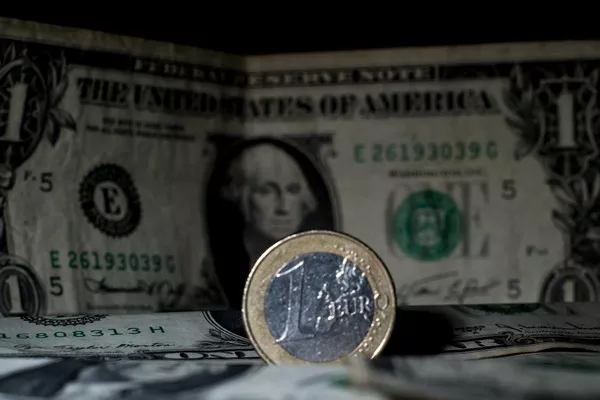One-dollar gold coins have long captivated the fascination of collectors and numismatists. These tiny, yet intricate pieces of currency hold a special place in the history of the United States and the world of coin collecting. In this article, we will explore the value and historical significance of the one-dollar gold coin, shedding light on the factors that determine their worth.
A Glimpse into History
The one-dollar gold coin, often referred to as the “Type 1 Gold Dollar,” was first minted in the early 19th century, specifically in 1849. It was a response to the California Gold Rush, which had significantly increased the availability of gold in the United States. These coins were minted in Philadelphia, Charlotte, Dahlonega, and New Orleans, reflecting the various U.S. Mint branches at the time.
Physical Characteristics: The one-dollar gold coin was a tiny masterpiece, with a diameter of just 13 millimeters (about half an inch) and a weight of 1.672 grams. Its small size made it distinct from other coins of the era.
Historical Significance: The Type 1 Gold Dollar has historical significance not only for its connection to the California Gold Rush but also because it marked the beginning of gold coinage in the United States, paving the way for the later issuance of larger denominations.
Determining the Value of One Dollar Gold Coins
The value of a one-dollar gold coin can vary widely, and it depends on several key factors. Numismatists and collectors consider the following elements when determining the worth of these coins:
Mintage: The total number of one-dollar gold coins produced during a particular year plays a significant role in determining their value. Coins with low mintage figures tend to be rarer and, consequently, more valuable.
Condition: The condition or grade of a coin is a crucial factor. Numismatists use a grading scale that ranges from “Poor” to “Mint State” (MS) to assess a coin’s condition. A one-dollar gold coin in pristine, uncirculated condition will command a higher price than a worn or damaged specimen.
Rare Varieties and Errors: Rare varieties and minting errors can greatly increase a coin’s value. Collectors are always on the lookout for unique attributes or imperfections in coins, as they add to their desirability.
Historical Significance: Coins with historical significance, such as those minted during important events or commemorating notable figures, may command higher prices.
Demand and Popularity: The demand for one-dollar gold coins can fluctuate over time. Certain coins may become more popular among collectors, leading to increased demand and, subsequently, higher values.
Examples of Notable One Dollar Gold Coins
Several one-dollar gold coins are highly sought after by collectors, each with its unique history and value. Here are a few noteworthy examples:
1849-C Open Wreath Gold Dollar: Minted in Charlotte, North Carolina, this coin is particularly rare, with only a limited number in existence. Its open wreath design is a distinctive feature.
1850-D Dahlonega Gold Dollar: Produced in Dahlonega, Georgia, this coin is known for its rarity and historical significance. The Dahlonega Mint played a crucial role in minting gold coins during the Gold Rush era.
1875 and 1876 Gold Dollars: These coins are among the last issues of the one-dollar gold coin series and are highly sought after by collectors due to their limited mintage.
Type 2 Gold Dollars: These later versions of the gold dollar introduced a new design and are popular among collectors who appreciate their aesthetic appeal.
Value Ranges
To give you a better understanding of the value of one-dollar gold coins, here is a general overview of price ranges for different conditions and years:
Common Dates in Circulated Condition: For one-dollar gold coins from common years and in circulated condition (e.g., Very Good to Extremely Fine), you can expect to pay anywhere from a few hundred to a few thousand dollars, depending on the specific year and condition.
Scarce Dates and Mintmarks: Scarcer dates and coins with mintmarks, especially those from Charlotte, Dahlonega, and New Orleans, can fetch significantly higher prices. Prices can range from several thousand to tens of thousands of dollars.
High-Quality, Uncirculated Coins: One-dollar gold coins in high-quality, uncirculated condition (Mint State) are highly prized by collectors and can command prices in the five-figure or even six-figure range. The rarity of the coin and its historical significance play a significant role in determining their value.
Rare Varieties and Errors: Coins with unique attributes, rare varieties, or minting errors can be exceptionally valuable. Prices for these coins are highly variable and can range from a few thousand dollars to hundreds of thousands or more.
Conclusion
One-dollar gold coins offer a window into the fascinating world of American numismatics. Their small size and rich history make them appealing to collectors and enthusiasts. The value of these coins is influenced by factors such as mintage, condition, rarity, and historical significance. Whether you’re a seasoned collector or a novice, exploring the world of one-dollar gold coins can be a rewarding and educational journey into the history of American coinage.


